444 68 41
We can contact you at the following numbers.
- 0544 868 68 41 Çekmeköy
0542 468 68 41 Kartal - info@radixdent.com.tr
What You Need to Know
The Effect of L-PRF Application on Pain, Swelling and Wound Healing Rate After Surgical Extraction of Impacted 20-Year-Old Teeth.
The Effect of L-PRF Application on Pain, Swelling and Wound Healing Rate After Surgical Extraction of Impacted 20-Year-Old Teeth.
Surgical extraction of buried wisdom teeth is one of the most common procedures in oral and maxillofacial surgery.
Pain, edema and trismus seen in the days following impacted tooth extraction decrease the quality of life of the patients and increase the financial burden due to the loss of labor during the recovery period.
Many different surgical techniques and materials have been described in the literature in order to reduce postoperative complications and speed up the healing process after the surgical extraction of impacted 20 year old teeth.
For this purpose, in our clinic, we apply L-PRF to the gravity cavity in order to reduce post-traction pain and edema and accelerate wound healing.
The L-PRF obtained from the person's own blood used in our clinic is a platelet concentrate containing all the components of blood involved in wound healing and immunity.
Unlike other platelet concentrates previously described in the literature, it is also called 2nd generation platelet concentrate since no anticoagulant agent is required in the preparation of L-PRF.
In order to obtain L-PRF, the patient's own blood is taken into 10 ml tubes without anticoagulants and centrifuged at 3000 rpm for 10 minutes without waiting.
In the middle of the tube, a tightly organized fibrin (L-PRF) network is formed, rich in leukocytes and platelets, poor plasma from the top of the tube and red cells at the bottom of the tube.
L-PRF mainly;
PDGF (platelet-derived growth factor),
TGFb-1 (transforming growth factor beta),
IGF (insulin-like growth factor)
abundant growth factor and other cytokines.
PDGF, TGFb-1 and IGF in wound healing; They are of great importance in the formation of the first scar tissue and maturation of the scar tissue.
Various platelet concentrates;
Accelerate wound healing,
Reducing scar tissue,
To protect the wound site from external factors,
Reduce the number of dressings,
It is used in many medical fields such as plastic surgery, orthopedics, dermatology and jaw surgery for many reasons such as improving patient comfort.
In the light of my academic studies1,2;
L-PRF contributes to the healing of the surgical field in less time and with less defects1,
In addition, I can say that L-PRF has a significant effect on reducing postoperative edema2.
uzm.dt. I. Contact MURAT directly
REFERENCES
Afat, Ibrahim Murat, Emine Tuna Akdogan, and Onur Gonul. "Effects of leukocyte-and platelet-rich fibrin alone and combined with hyaluronic acid on early soft tissue healing after surgical extraction of impacted mandibular third molars: a prospective clinical study." Journal of Cranio-Maxillofacial Surgery (2018).
Afat, Ibrahim Murat, Emine Tuna Akdogan, and Onur Gonul. "Effects of Leukocyte-and Platelet-Rich Fibrin Alone and Combined With Hyaluronic Acid on Pain, Edema, and Trismus After Surgical Extraction of Impacted Mandibular Third Molars." Journal of Oral and Maxillofacial Surgery 76.5 (2018): 926-932.





